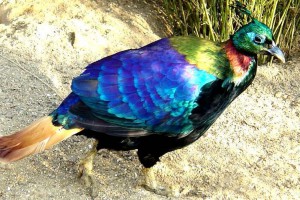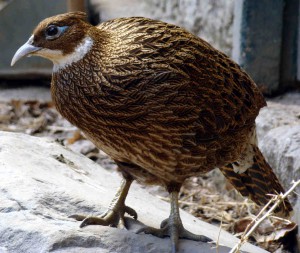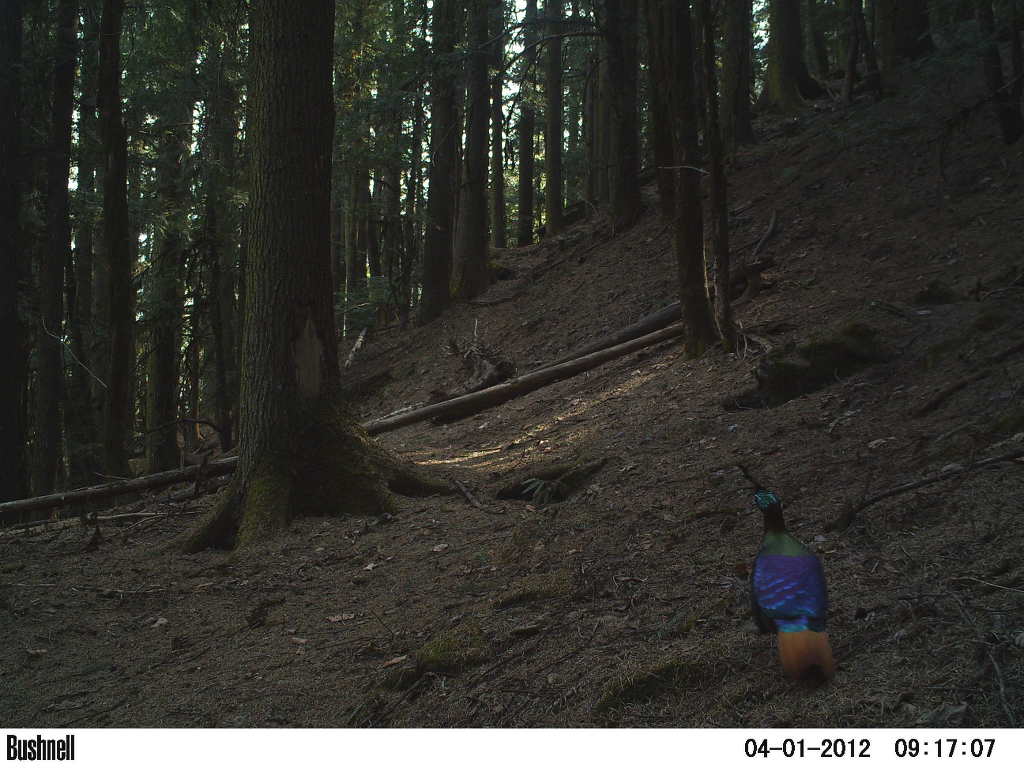
Monal
The Himalayan Monal (Lophophorus impejanus), also known as the Impeyan Monal or Danphe, is one of the most iconic birds of the Himalayas and the state bird of Himachal Pradesh. Found at high altitudes in the Great Himalayan National Park (GHNP), this brilliantly colored pheasant is a favorite among birdwatchers, wildlife photographers, and nature lovers visiting the region.
Identification and Appearance
The male Himalayan Monal is unmistakable, with iridescent feathers that shimmer in shades of green, blue, copper, and purple. It sports a metallic green crest, a snow-white patch on the rump, and a coppery back. In contrast, the female is more subdued in color, with earthy browns that provide camouflage in alpine undergrowth.
Habitat and Range in GHNP
In GHNP, the Himalayan Monal typically inhabits altitudes between 2,500 and 4,000 meters, frequenting alpine meadows, coniferous forests, and steep grassy slopes. It is commonly sighted in Tirthan Valley, Shilt, Chalocha, and near Rollah, especially during the spring and post-monsoon seasons.
Behavior and Ecology
The Himalayan Monal is a ground-dwelling bird, often seen digging through leaf litter or soft soil with its powerful beak in search of roots, tubers, seeds, insects, and grubs. During the day, it moves through open slopes and meadows, retreating to forest edges or rocky overhangs by evening.
Despite its bright appearance, the Monal is extremely alert and skittish, making close encounters rare. Early mornings or dusk provide the best chance to observe it, often in pairs or small groups.
The monal is abundant in the GHNP forest’s temperate upper zone, which comprises oak and conifer forest interspersed with open grassy slopes, cliffs and alpine meadows.
Although the monal is concentrated mostly between 2,700m and 3,700m, it exhibits a clear altitudinal migration, descending as low as 2,000m in winter. However, it also shows tolerance to snow and has been observed digging through snowfall for roots, tubers and invertebrates.
Males weigh between 1.9kg and 2.3kg, whilst females weigh between 1.8kg and 2.15kg.
The adult male has a long, metallic green crest, reddish copper plumage on the back and sides of the neck, and a prominent white back and rump visible during flight. The male’s tail feathers are reddish brown and darker towards the tips.
The female is dull in colour. Its upper parts are covered in dark, brownish-black feathers, its foreneck has a prominent white patch and the lower tail coverts (small feathers) are white, barred with black and reddish brown.
The monal can be seen in pairs during breeding season (April to August), and forms large coveys (flocks) for communal roosting in the winter.
The male monal was formerly under heavy hunting pressure for its crest feathers, which were used to ornament the hats of Himachali men until 1982, when legal hunting was banned in the state.
Breeding Season
Breeding occurs from April to August. Males become especially vocal during this time, emitting sharp whistles and displaying their plumage to attract females. Nests are shallow depressions on the ground, usually tucked under bushes or in rocky crevices. The female lays 3 to 5 eggs, which she incubates for about 27 days.
Conservation and Cultural Significance
While the Himalayan Monal is listed as Least Concern by the IUCN, it faces threats from habitat loss, hunting, and disturbance from tourism. Protected areas like GHNP provide safe habitats for stable populations.
This bird holds cultural importance in Himalayan communities and features in local folklore and traditional art. Its feathers, once coveted for ceremonial dress, are now protected under Indian wildlife laws, and the species is included under Schedule I of the Wildlife Protection Act, 1972.
Birdwatching Tip
Look for the Himalayan Monal while hiking on high-altitude trails in Tirthan and Sainj valleys. Carry binoculars and walk quietly—patience is essential, but the reward is unforgettable.





